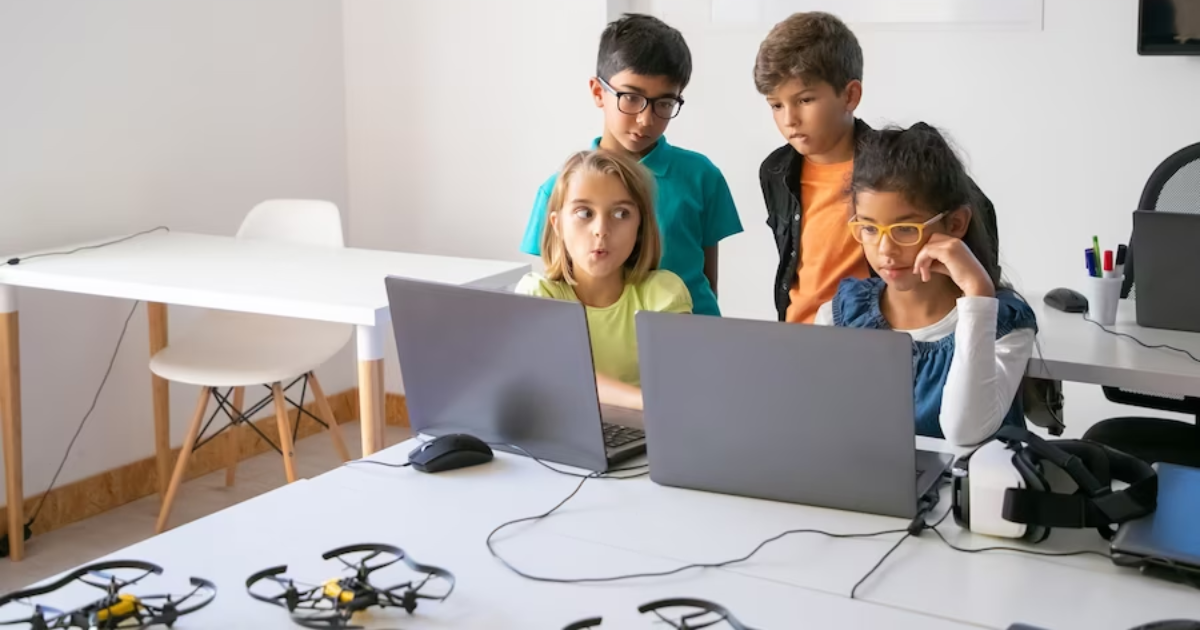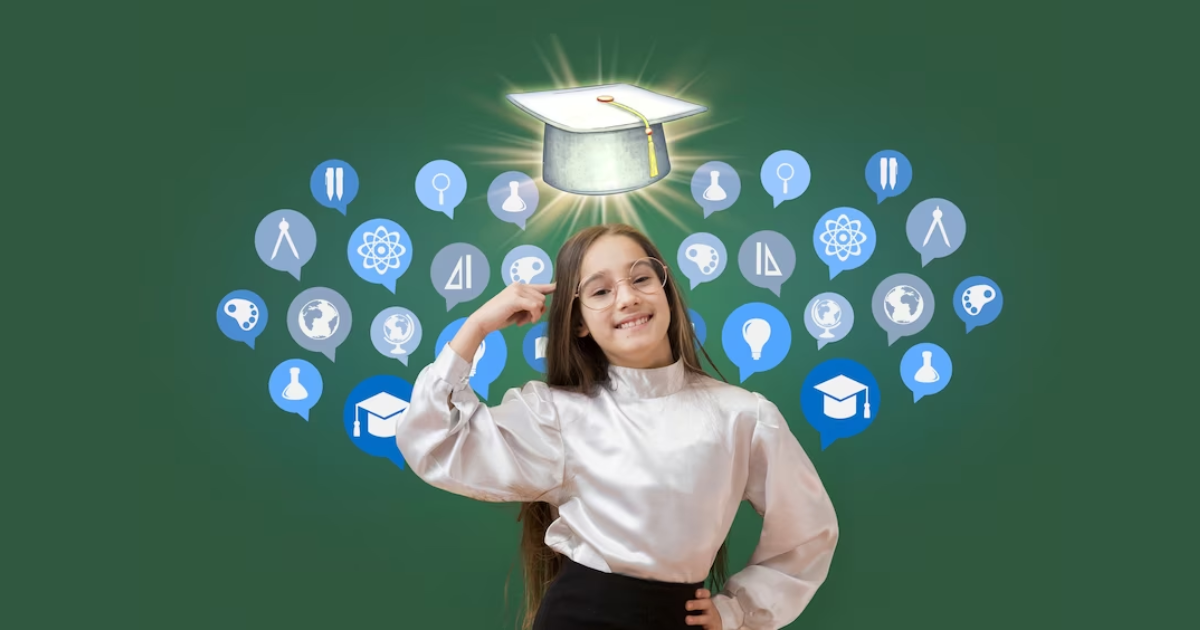The world of education is undergoing a profound transformation, thanks to the integration of Internet of Things (IoT) technology into the classroom. With IoT, classrooms are no longer confined to traditional teaching methods; instead, they are evolving into dynamic and interconnected learning spaces.
Analysts expect the global IoT in the education market will grow to USD 17.42 billion by 2028, increasing an average of 14.22% per year during the forecast period.
This article explores the various ways in which IoT is revolutionizing education, from enhancing student engagement to providing educators with powerful tools for personalized instruction.
Here are some of the ways that IoT is changing the classroom:
- Personalized Learning
- Data collection: IoT devices can collect data about students’ learning progress, such as their answers to questions, their performance on tasks, and their time spent on different activities. This data can be used to create a detailed profile of each student’s learning needs.
- Personalized plans: This data can then be used to create personalized learning plans that are tailored to each student’s individual strengths and weaknesses. It makes learning more effective for students.
- Adaptive learning: IoT devices can also be used to deliver adaptive learning experiences. This means that the content and difficulty of the learning experience can be adjusted based on each student’s individual needs. This can help students to stay engaged and motivated in their learning.
- Engaging and Interactive Learning
- Interactive games and simulations: IoT devices can be used to create interactive games and simulations that can help students learn in a fun and engaging way. For example, students can use IoT devices to simulate experiments or to play games that teach them about different concepts.
- Virtual reality: IoT devices can be used to create virtual reality experiences that can transport students to different places and times. This can help students learn about new cultures, historical events, and scientific phenomena in a way that is not possible with traditional textbooks and lectures.
- Augmented reality: IoT devices can be used to create augmented reality experiences that can overlay digital information onto the real world. This can help students to learn about the world around them in a more immersive and interactive way.
- Real-Time Feedback
- Formative assessment: IoT devices can be used to provide students with formative assessment, which is feedback that is given on a regular basis to help students track their progress and identify areas where they need improvement. This feedback can be given in real time, which can help students make adjustments to their learning strategies as needed.
- Gamification: IoT devices can also be used to gamify learning. This means making learning more fun and engaging by incorporating game-like elements, such as points, badges, and levels. This can help to keep students motivated and engaged in their learning.
- Improved Safety
- Vital signs monitoring: IoT devices can be used to monitor students’ vital signs, such as their heart rate and blood pressure. This can help to identify students who are in need of medical attention.
- Location tracking: IoT devices can be used to track students’ location in the classroom or school. This can help to ensure that students are safe and accounted for.
- Security: IoT devices can be used to improve security in the classroom or school. For example, sensors can be used to detect unauthorized entry or to monitor for fire or other hazards.
- Reduced Costs
- Energy monitoring: IoT devices can be used to monitor energy usage in the classroom or school. This can help to identify areas where energy can be saved.
- Inventory tracking: IoT devices can be used to track inventory levels in the classroom or school. This can help to prevent shortages and to ensure that supplies are being used efficiently.
These are just a few of the ways that IoT is changing the classroom. As the technology continues to develop, we can expect to see even more innovative and effective ways to use IoT in education.
How IoT Can Improve Each Aspect of Learning
IoT has the potential to improve each aspect of learning, from the way students are assessed to the way they interact with each other and their teachers. Here are some specific examples:
Assessment
- Personalized assessments: IoT devices can be used to collect data about students’ learning progress, such as their answers to questions, their performance on tasks, and their time spent on different activities. This data can then be used to create personalized assessments that are tailored to each student’s individual strengths and weaknesses.
- Identifying struggling students: IoT devices can also be used to identify students who are struggling. For example, if a student is consistently answering questions incorrectly or taking longer than their peers to complete tasks, this could be a sign that they are struggling. This information can then be used to provide students with additional support, such as tutoring or remediation.
Instruction
- Interactive games and simulations: IoT devices can be used to create interactive games and simulations that can help students learn in a fun and engaging way. For example, students can use IoT devices to simulate experiments or to play games that teach them about different concepts.
- Virtual reality: IoT devices can be used to create virtual reality experiences that can transport students to different places and times. This can help students learn about new cultures, historical events, and scientific phenomena in a way that is not possible with traditional textbooks and lectures.
Collaboration
- Collaborative projects: IoT devices can be used to facilitate collaborative projects between students. For example, students can use IoT devices to work on projects together, share ideas, and give feedback.
- Peer-to-peer learning: IoT devices can be used to support peer-to-peer learning. For example, students can use IoT devices to ask each other questions, share resources, and give each other feedback. This can help students to learn from each other and to build a community of learners.
Communication
- Reminders and feedback: IoT devices can be used to send students reminders about upcoming assignments or to provide them with feedback on their work. This can help to keep students on track and to ensure that they are getting the support they need.
- Parent-teacher communication: IoT devices can also be used to improve communication between parents and teachers. For example, teachers can use IoT devices to send parents updates about their child’s progress or to request permission for field trips. This can help to keep parents informed about their child’s education and to build a partnership between home and school.
Motivation
- Rewards: IoT devices can be used to motivate students to learn. For example, students can earn rewards for completing tasks or for reaching certain learning goals.
These are just a few examples of how IoT can be used to improve learning outcomes, personalize instruction, and make schools more efficient. As the technology continues to develop, we can expect to see even more innovative and effective ways to use IoT in education.
Conclusion
IoT is reshaping the landscape of education, offering unprecedented opportunities for personalized learning, improved engagement, and enhanced classroom management. With the right implementation and safeguards in place, connected devices are revolutionizing the way we learn, equipping students with the skills they need to thrive in the digital age and empowering educators to deliver more effective instruction. As we continue to embrace the possibilities of IoT in the classroom, the future of education looks brighter than ever.

